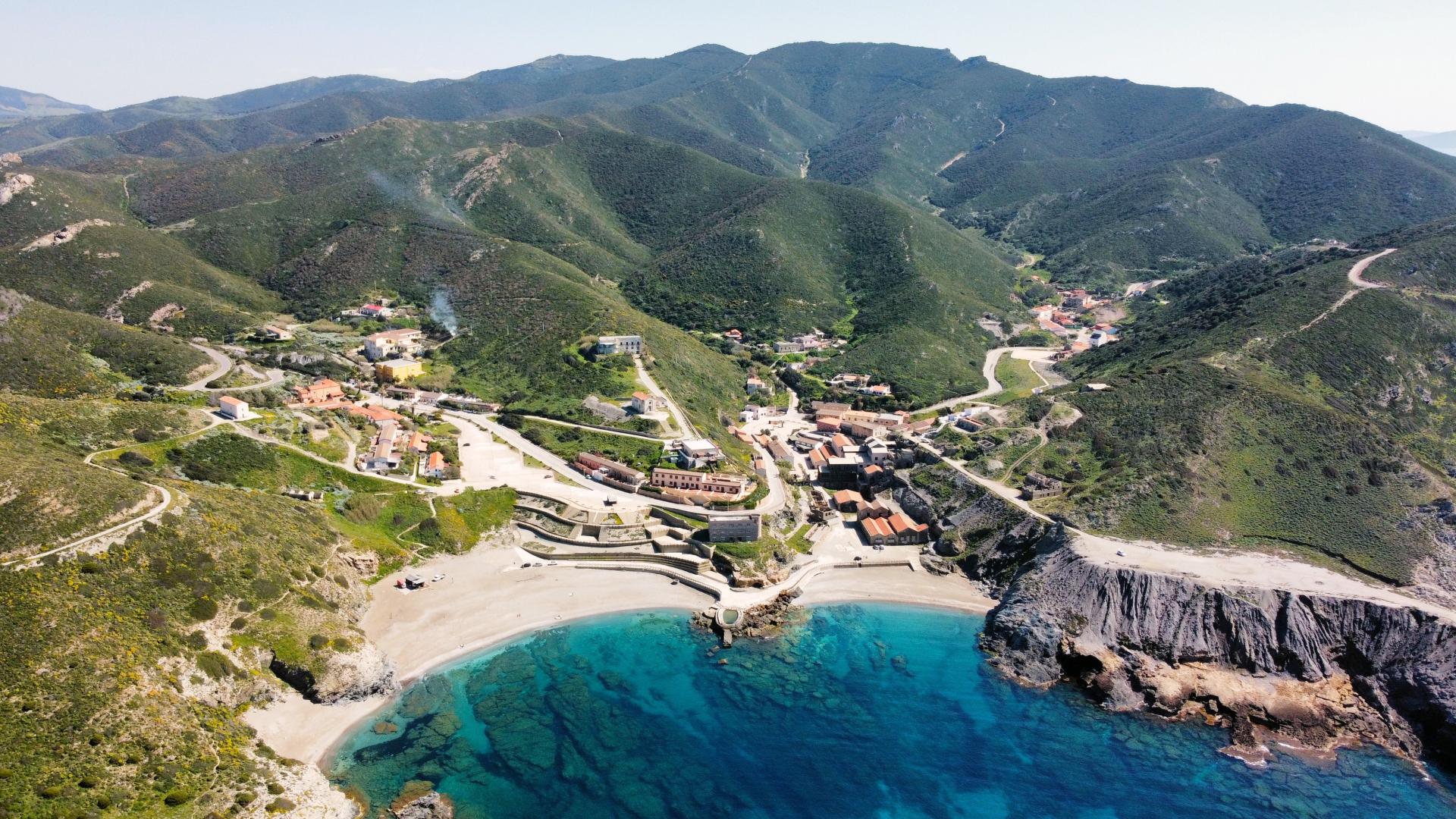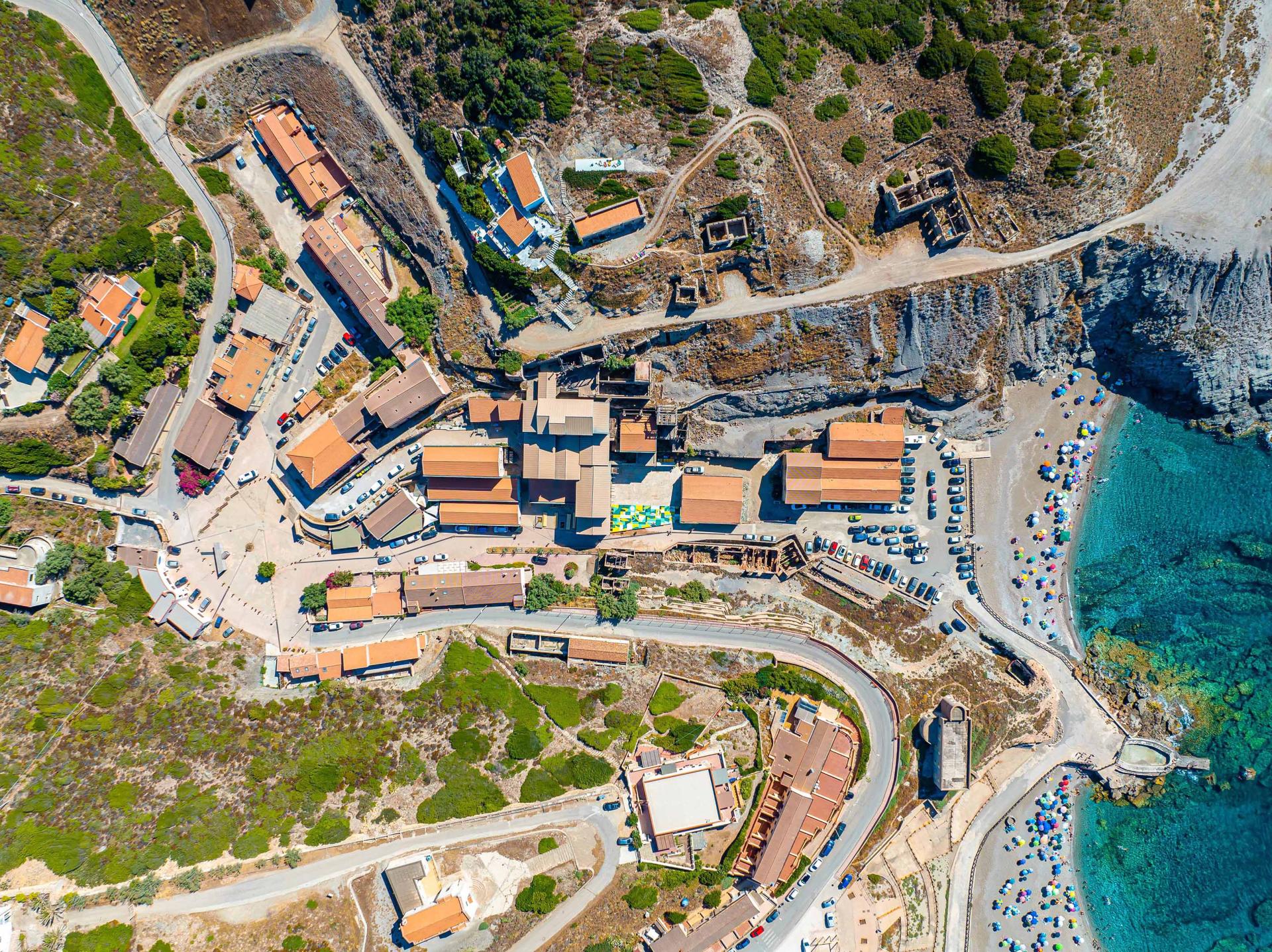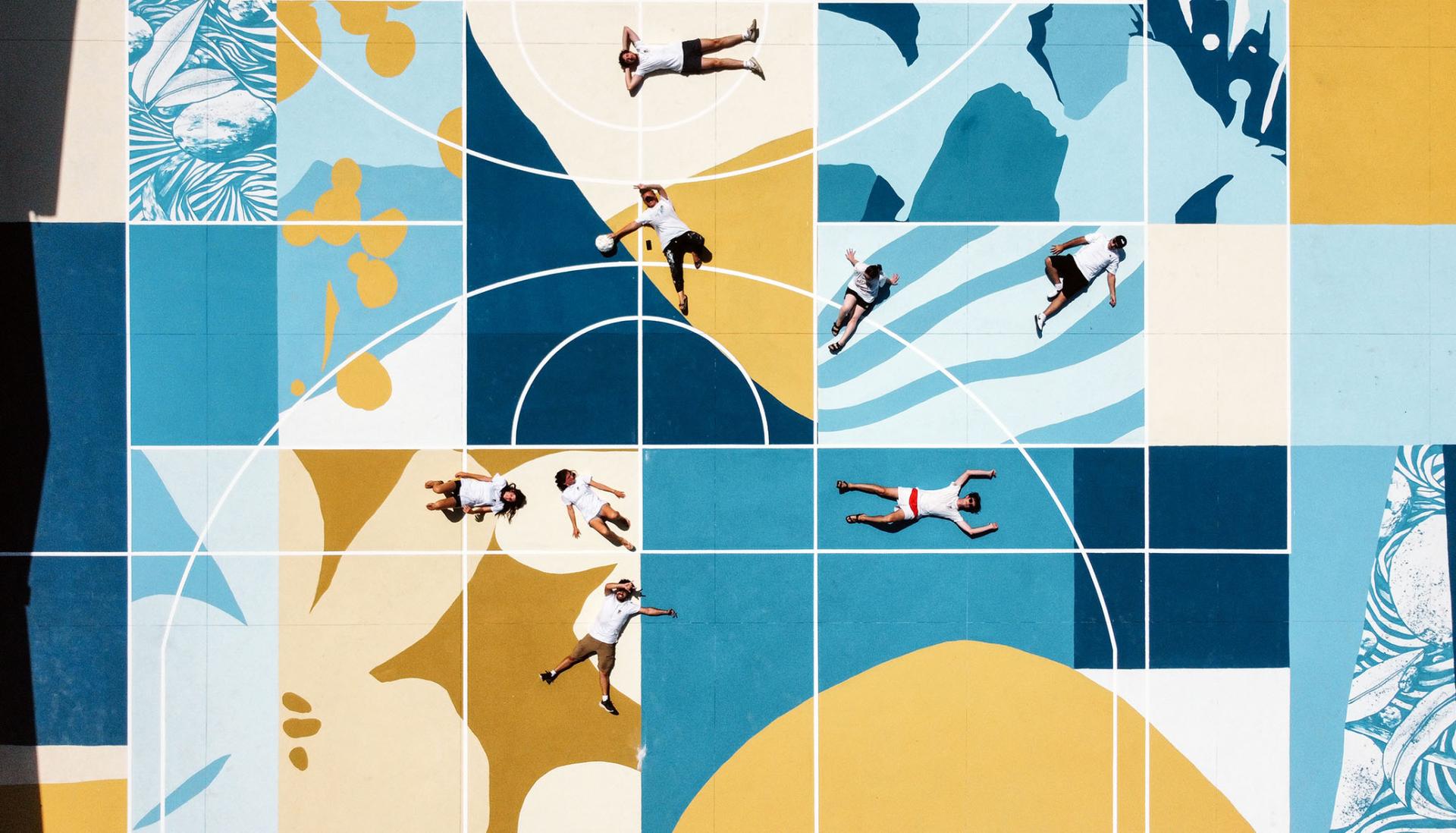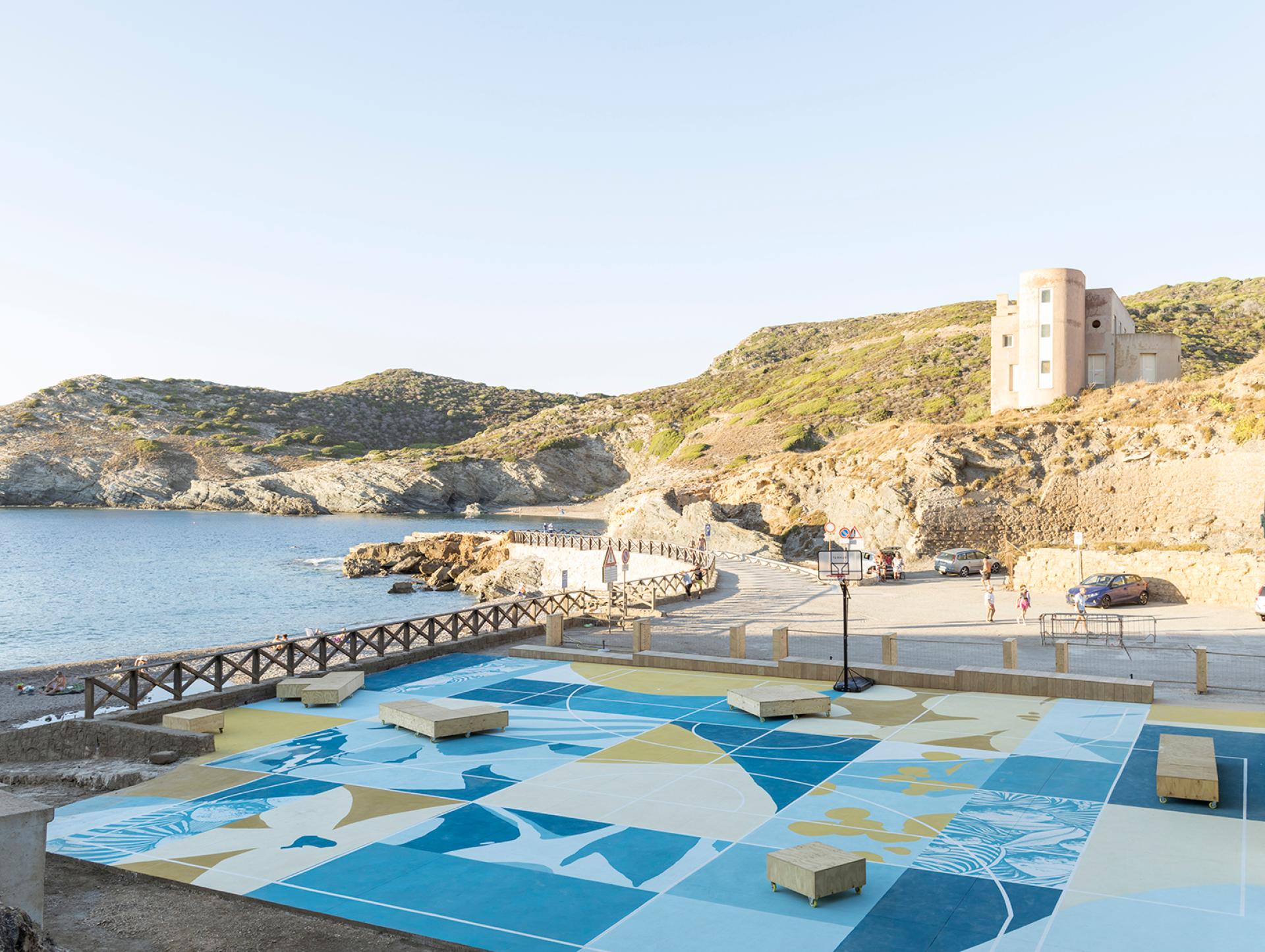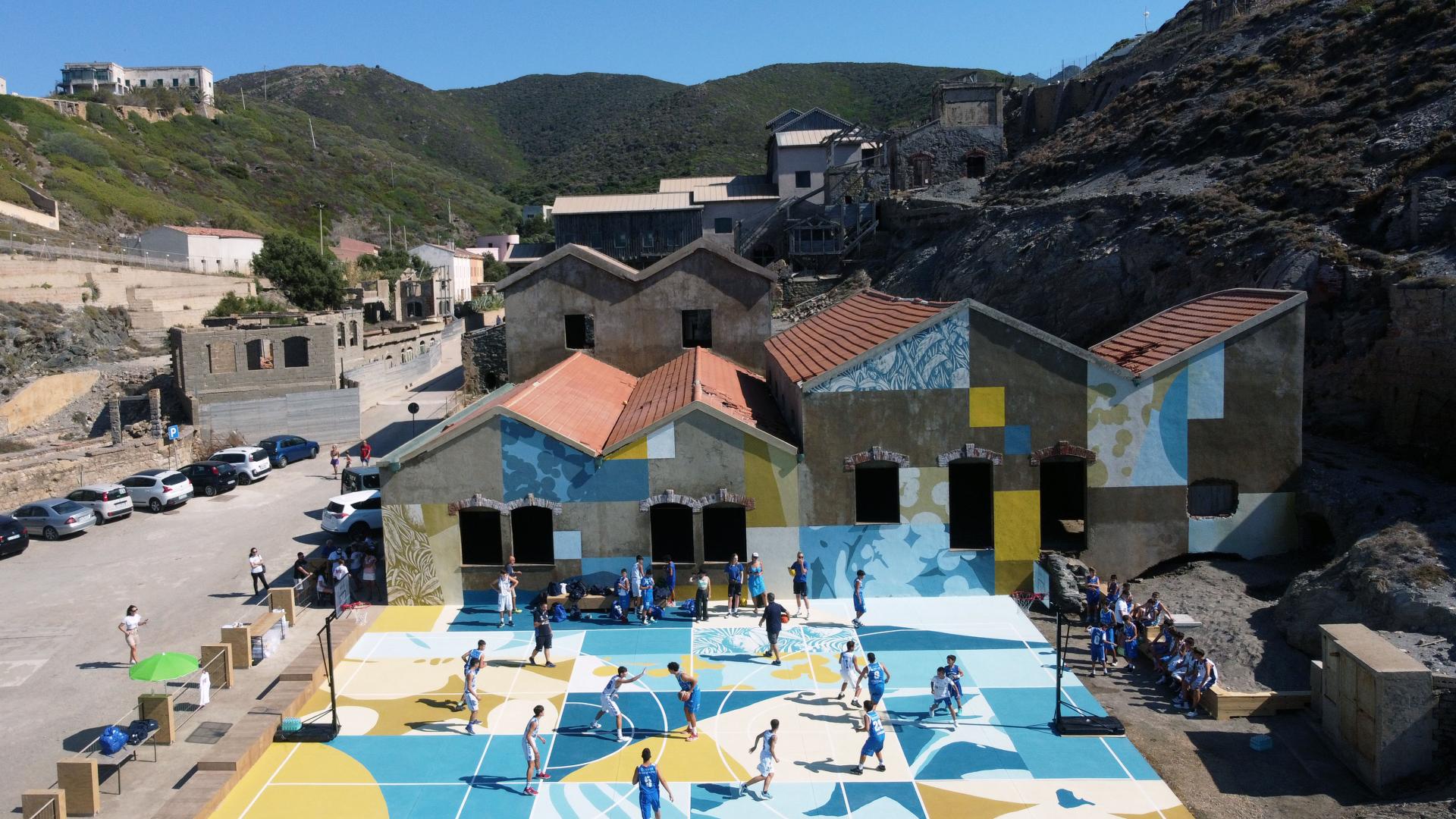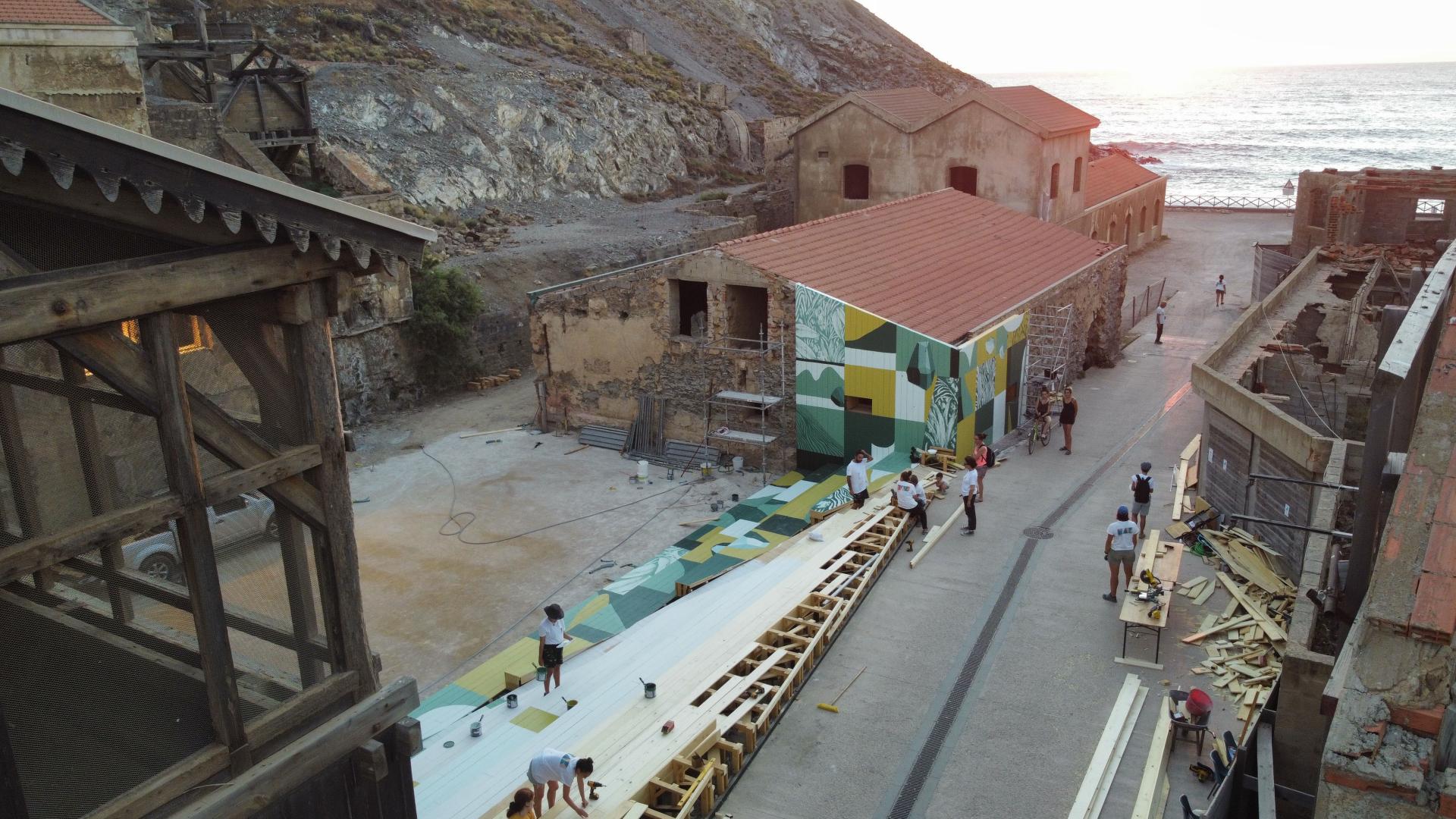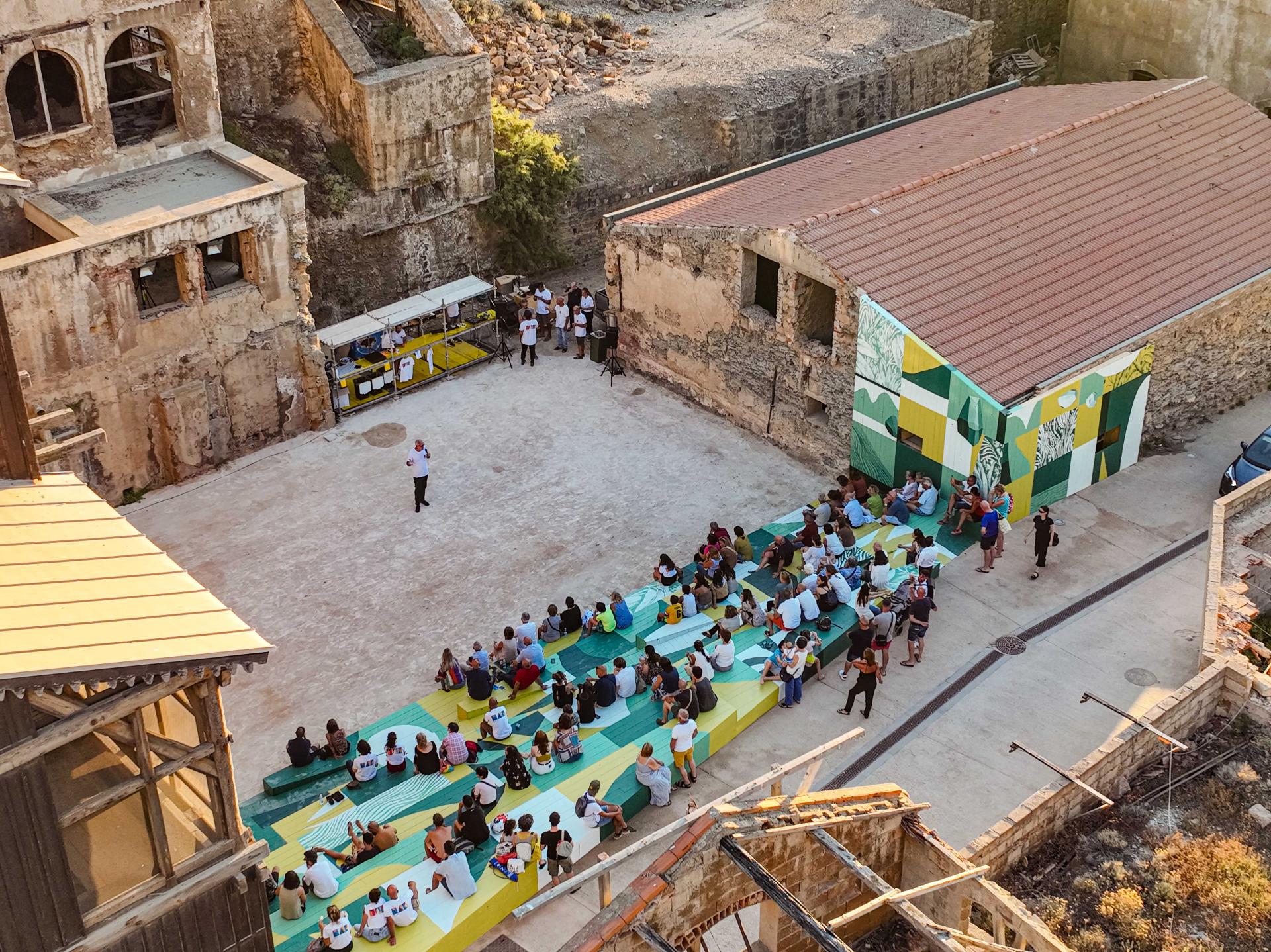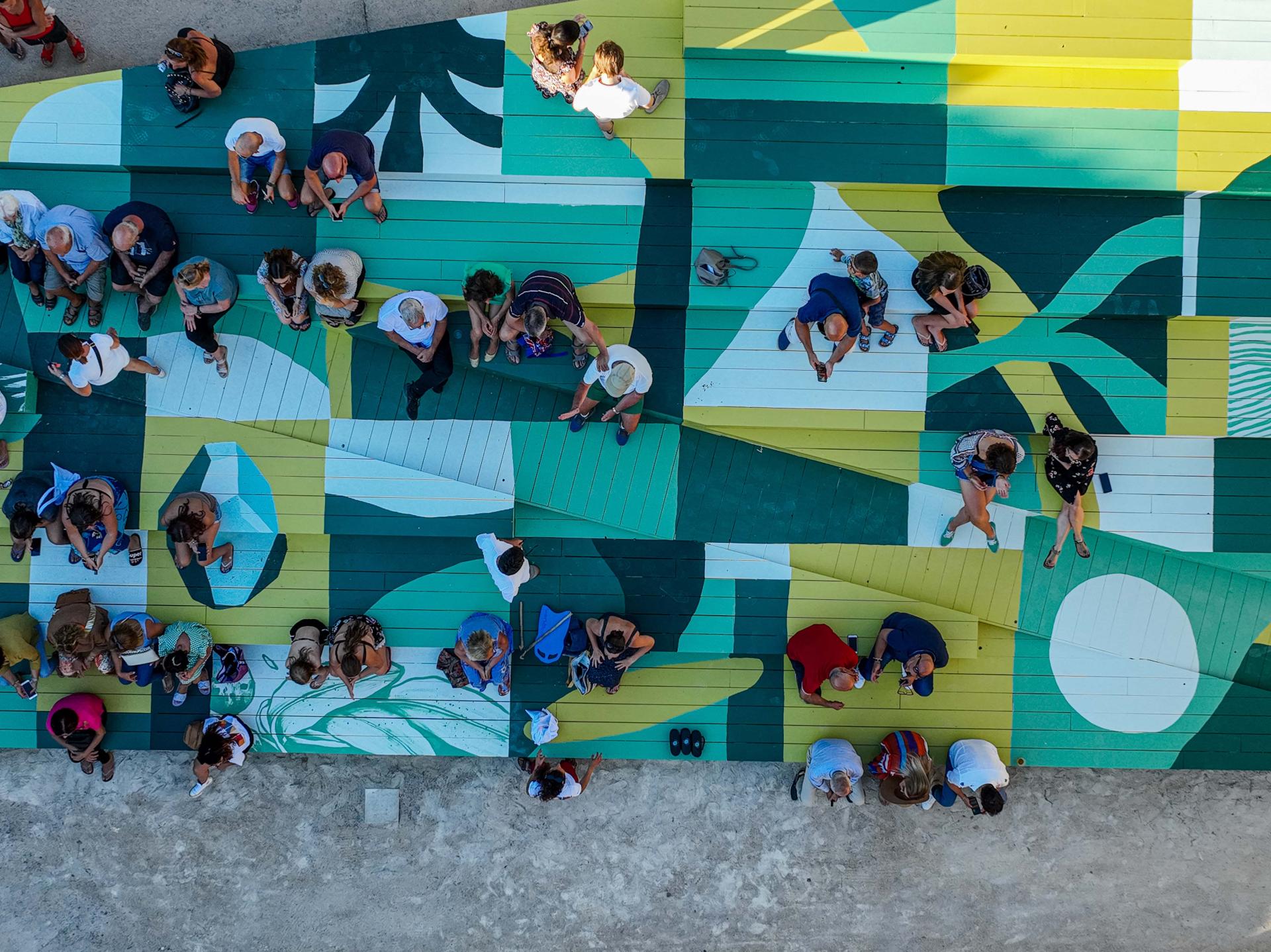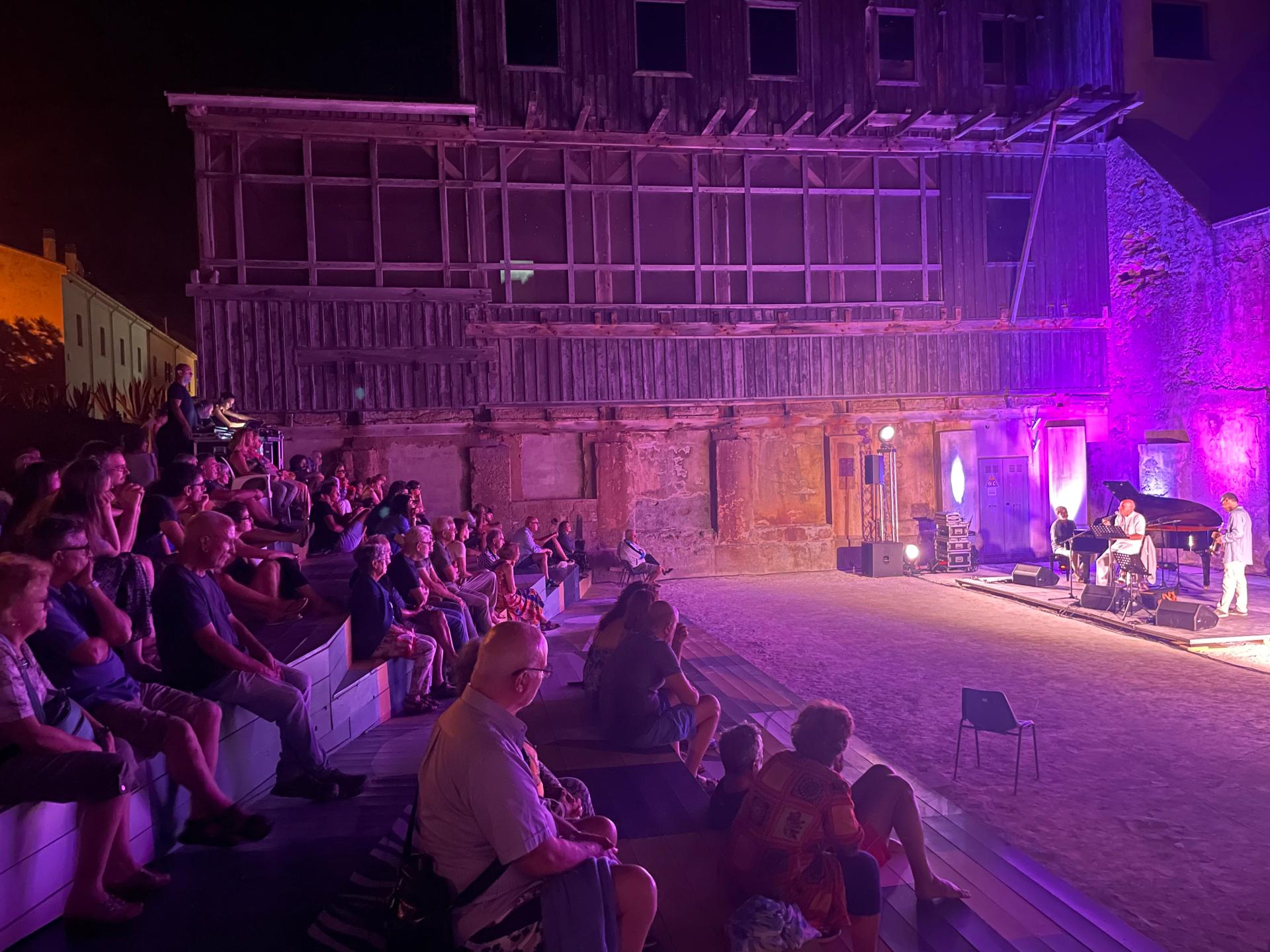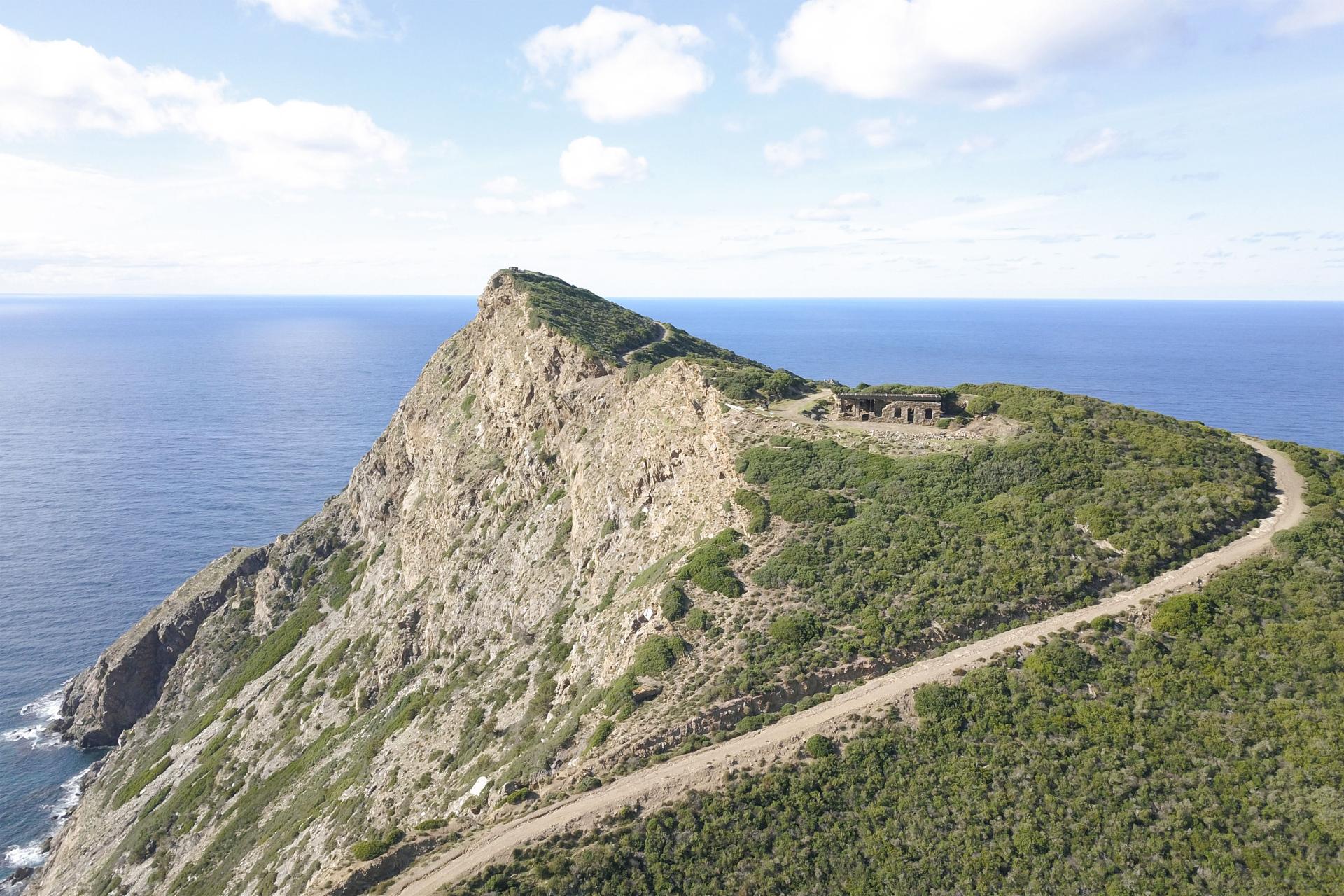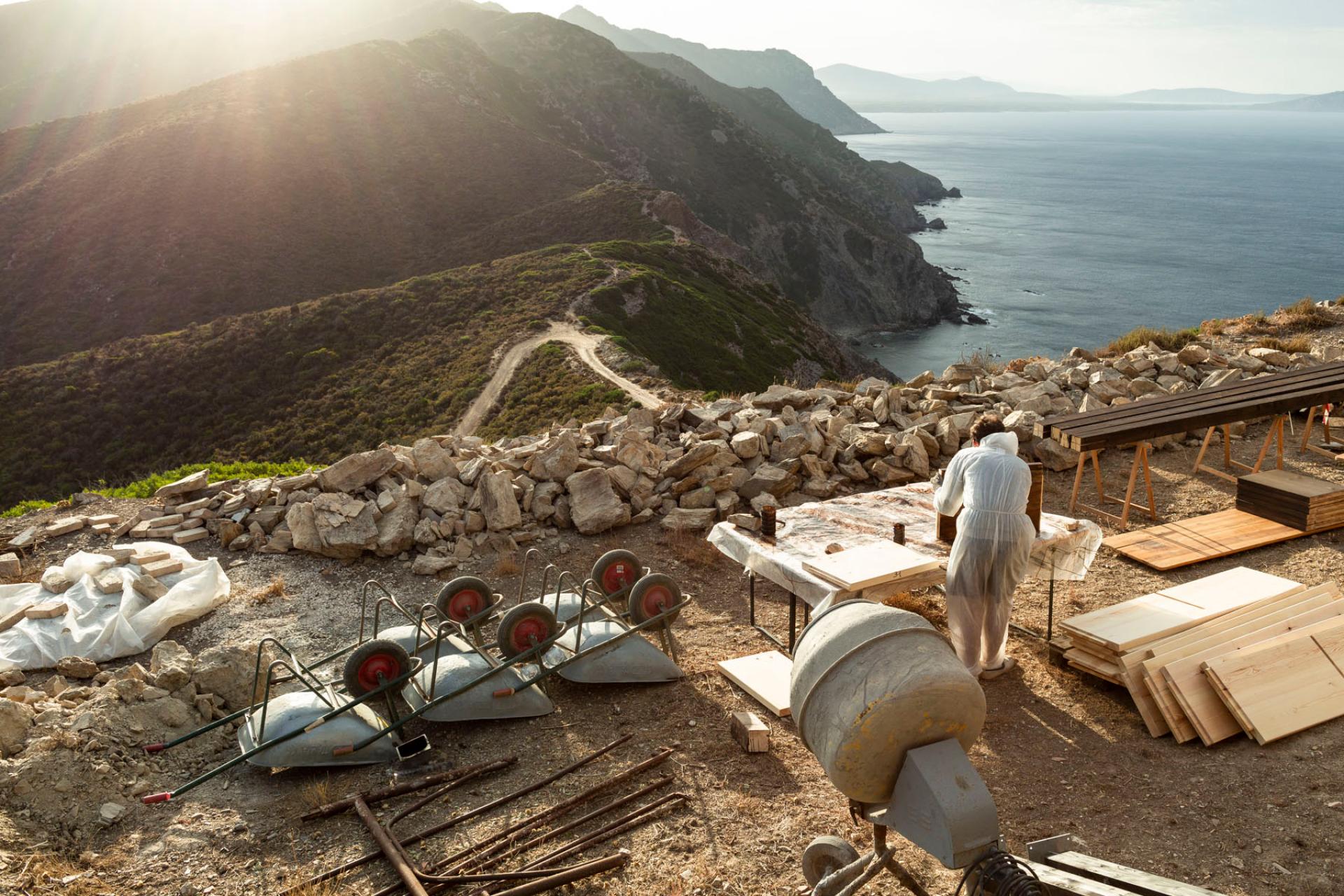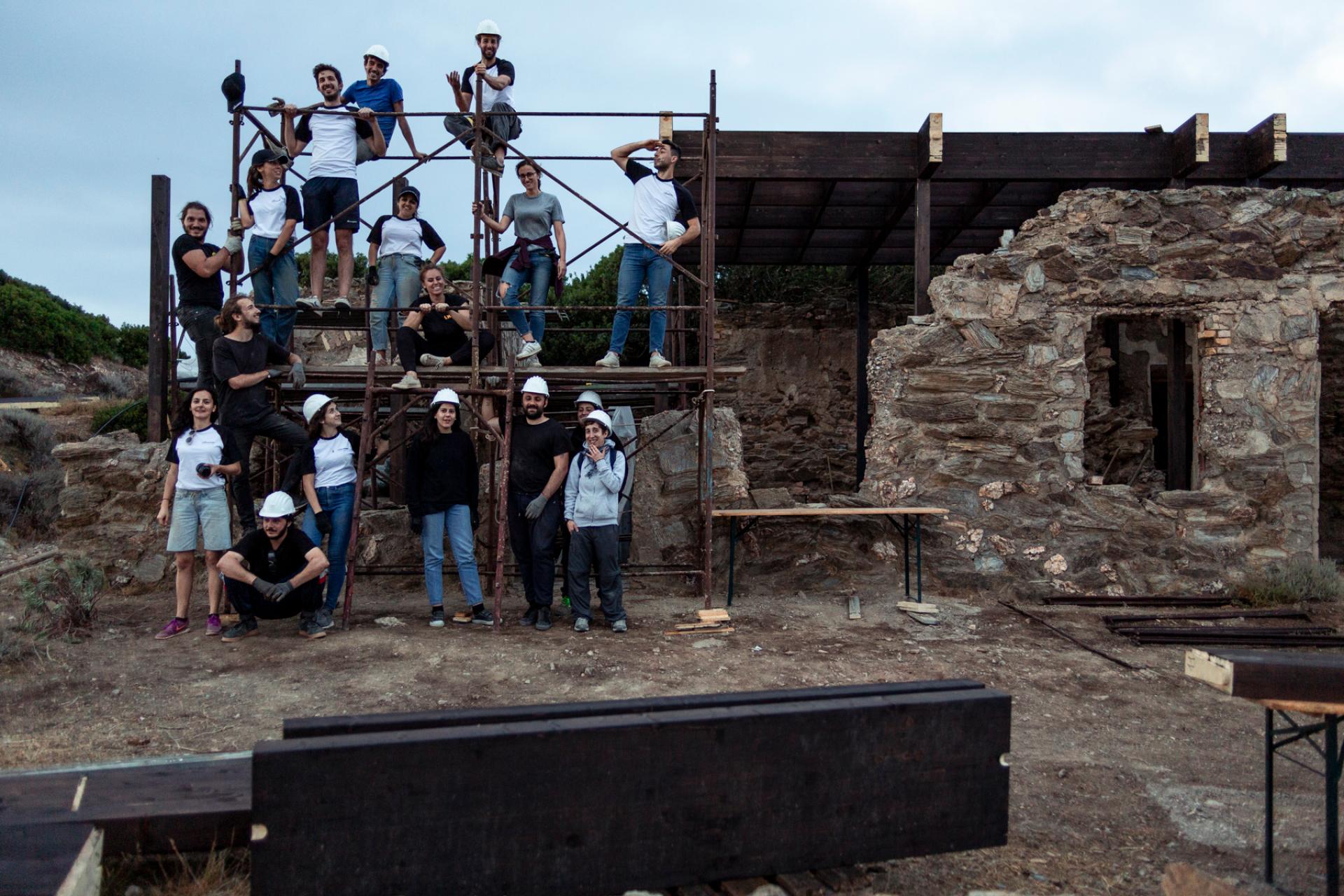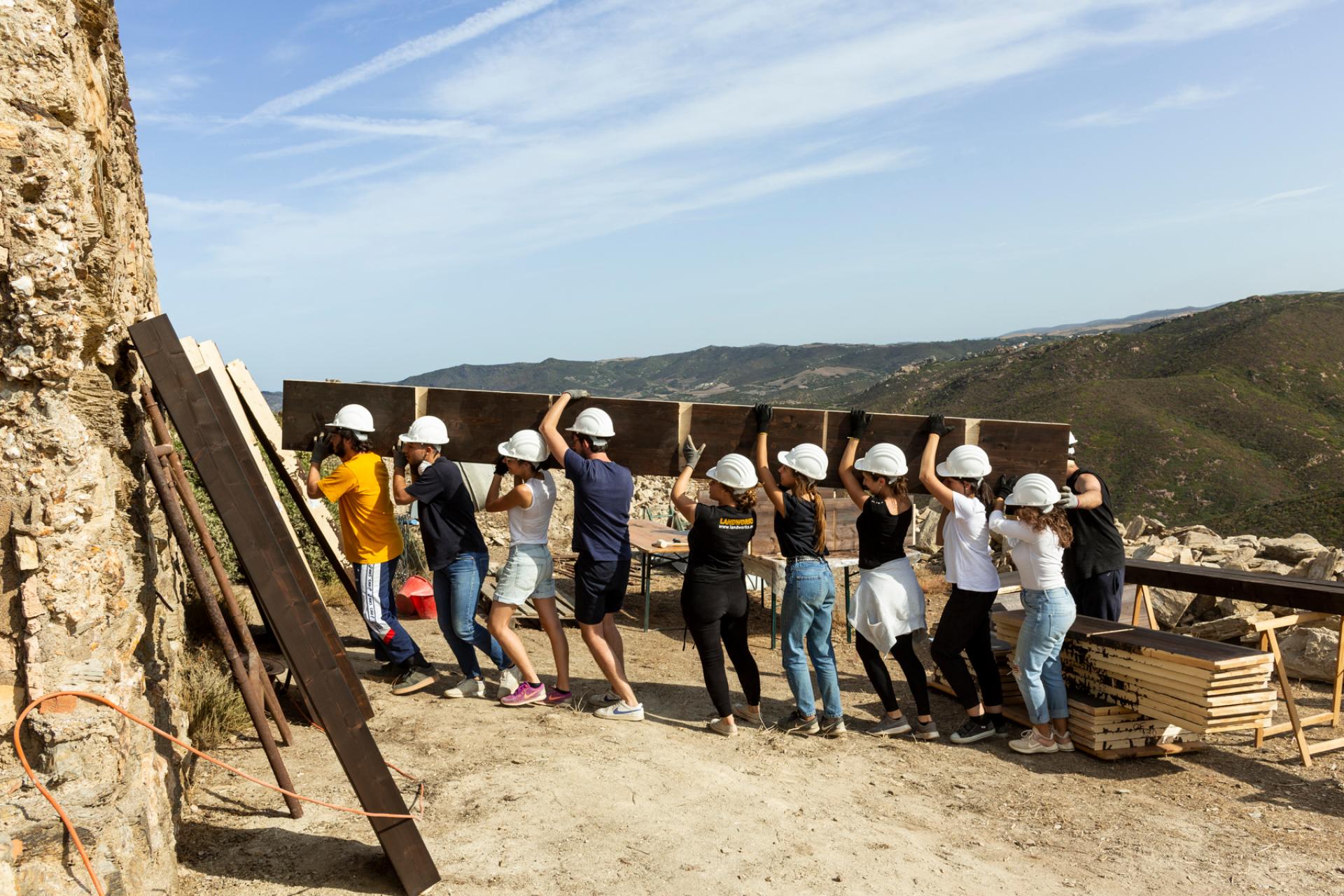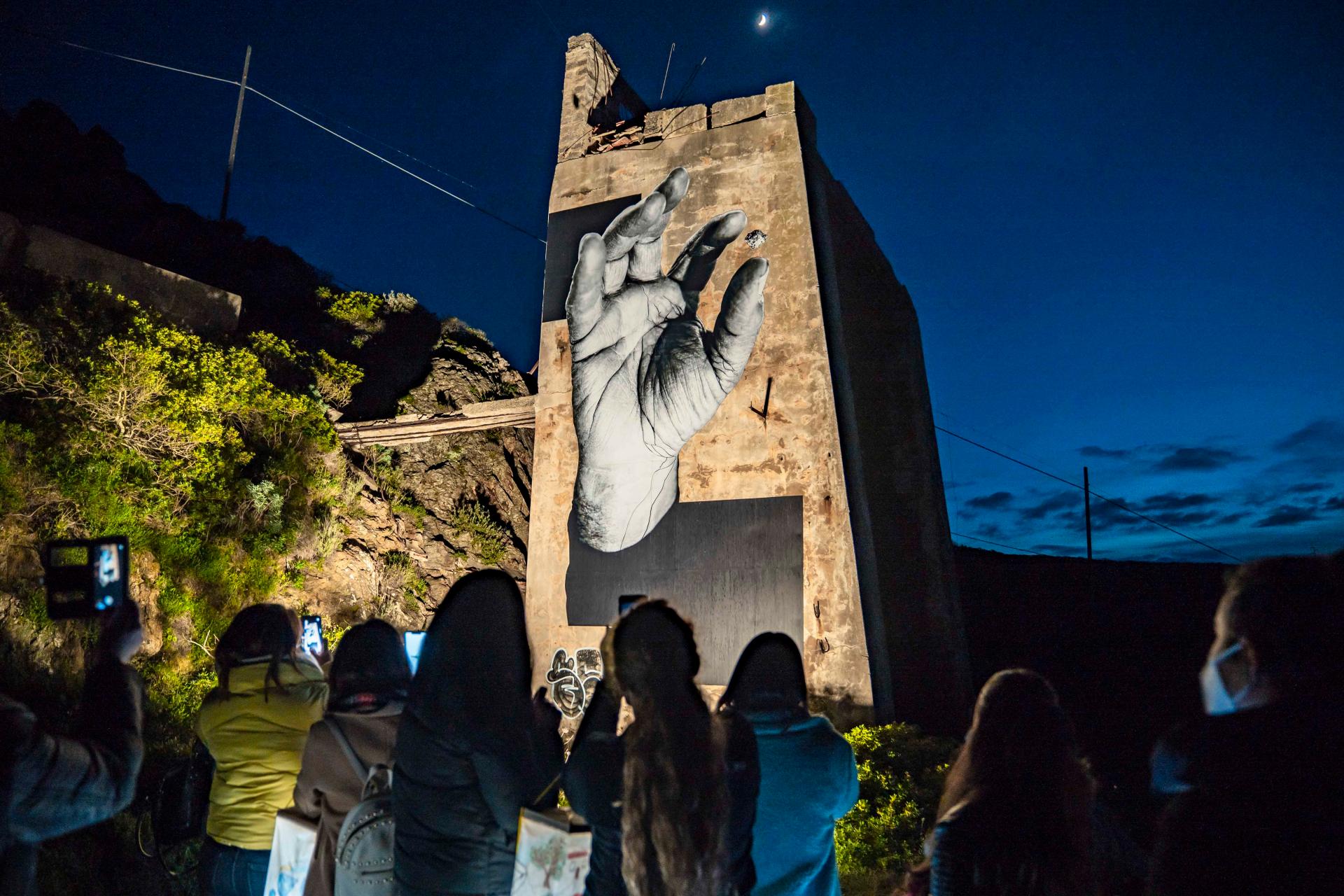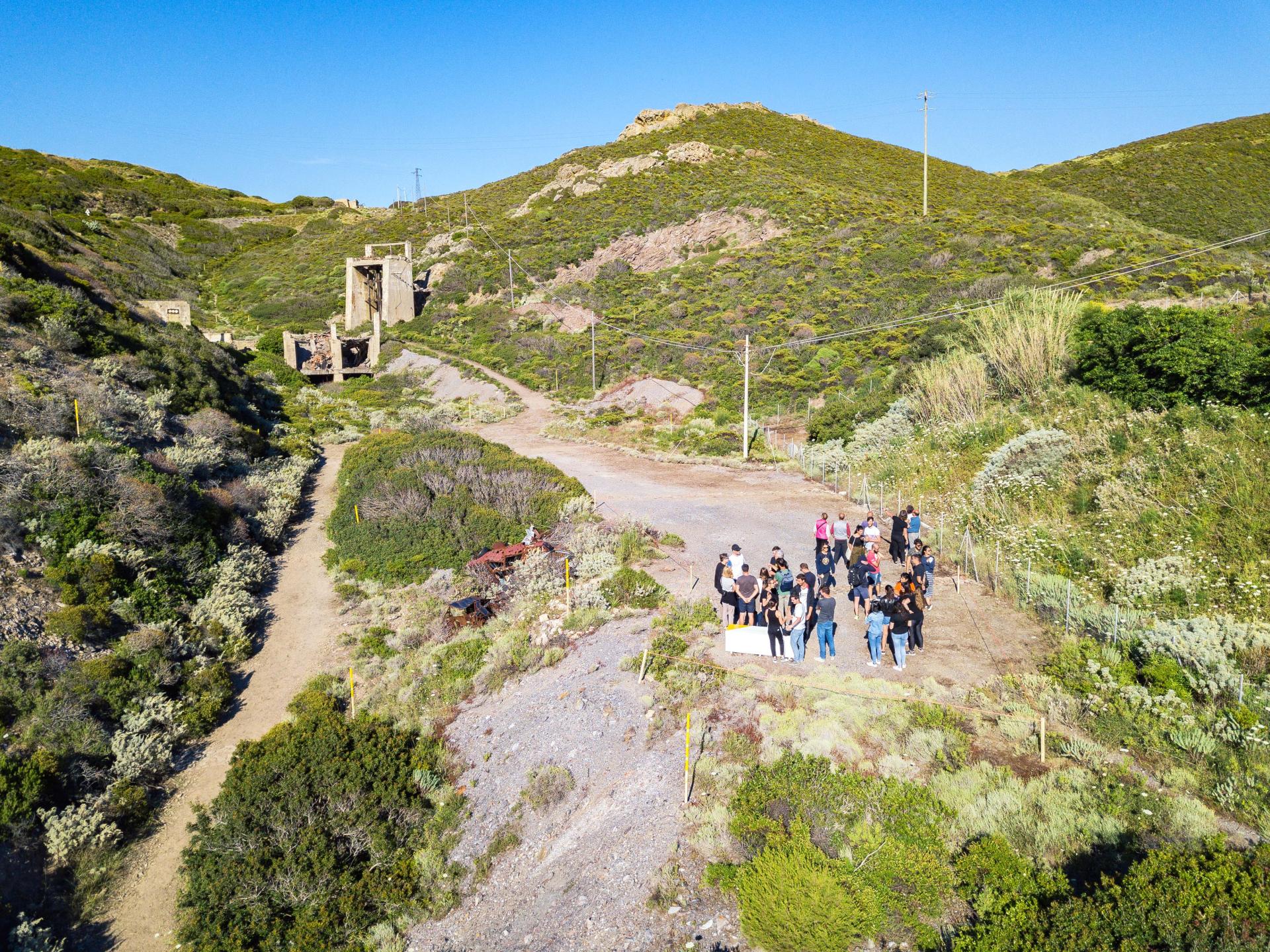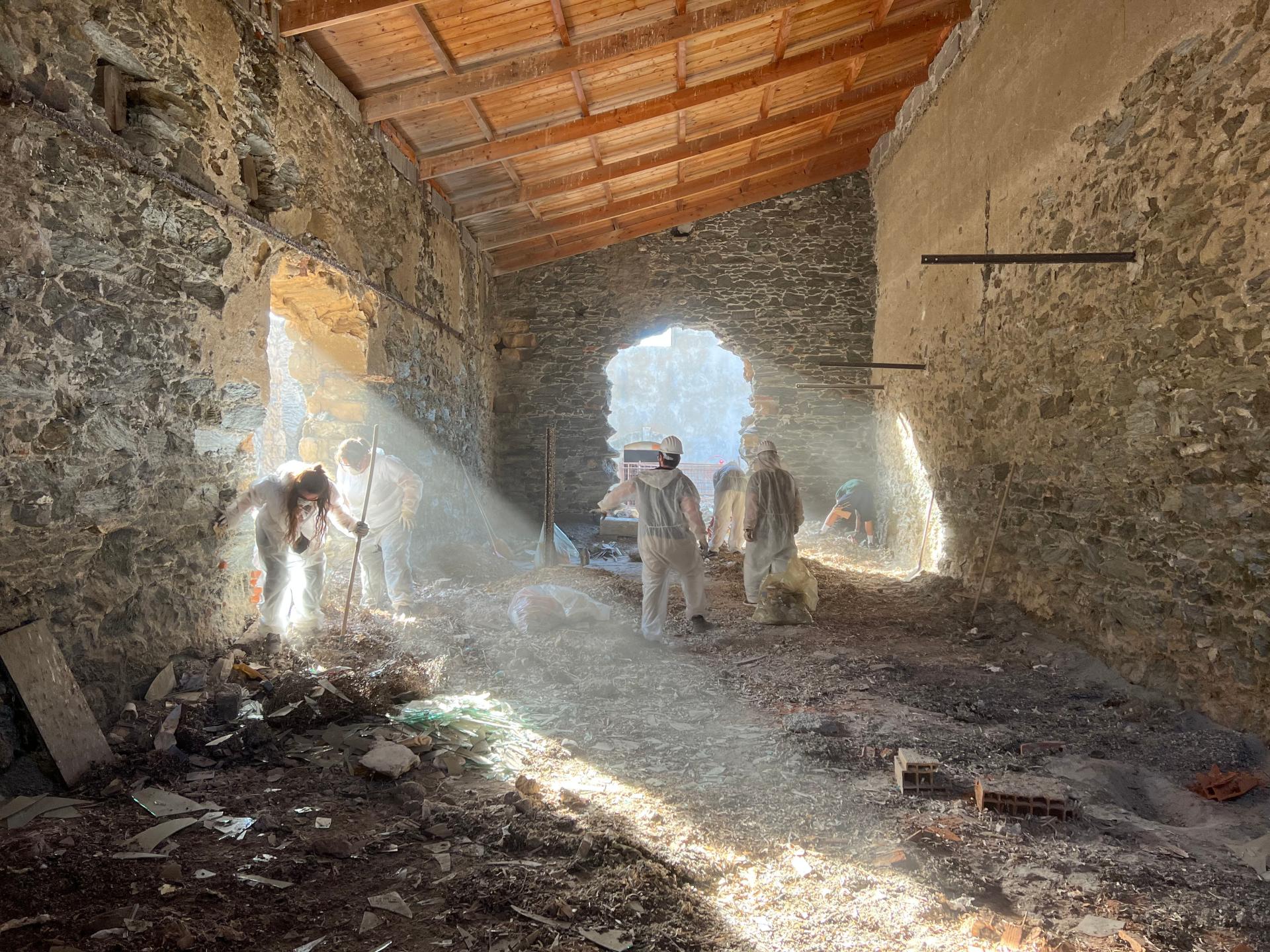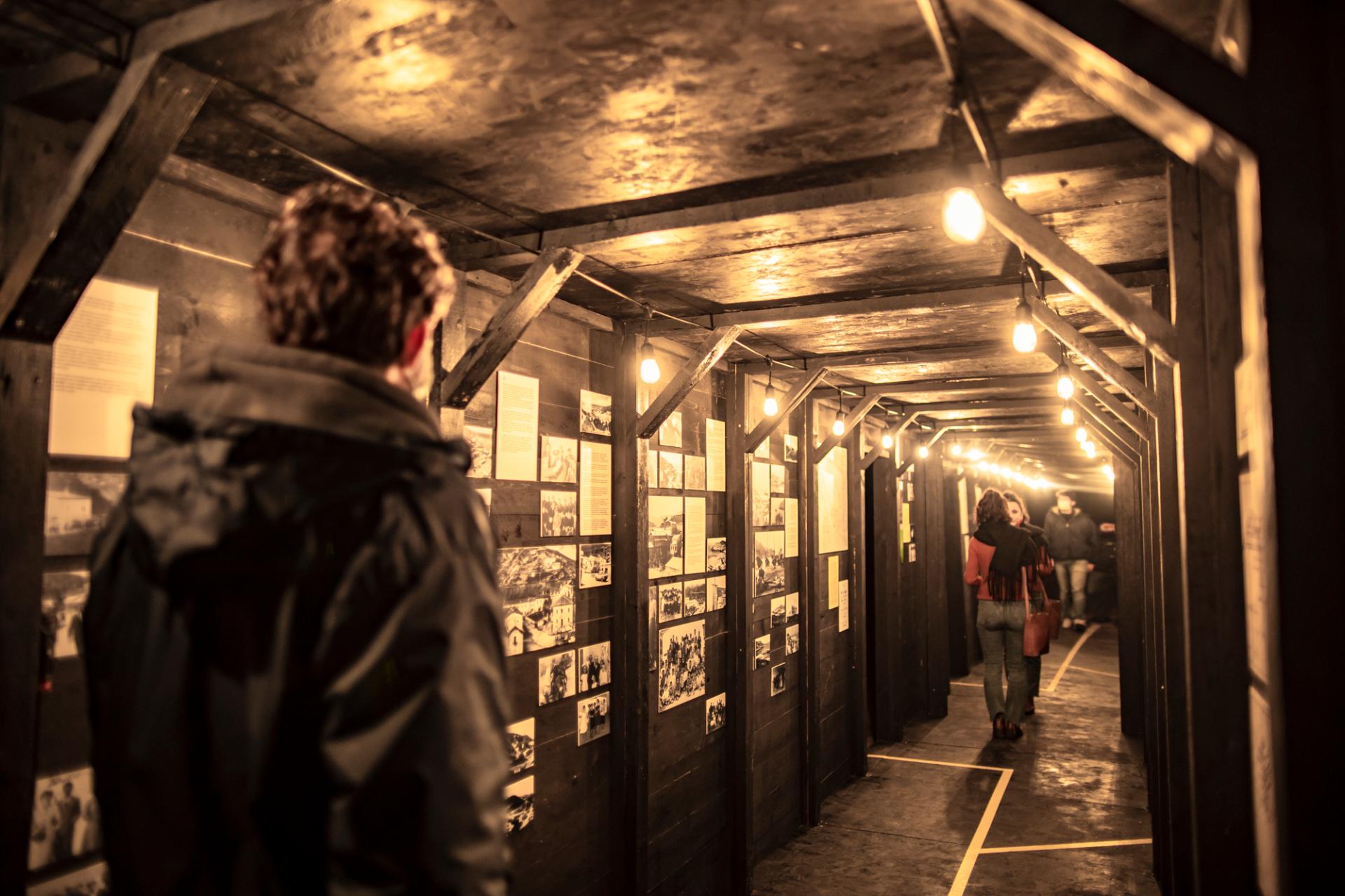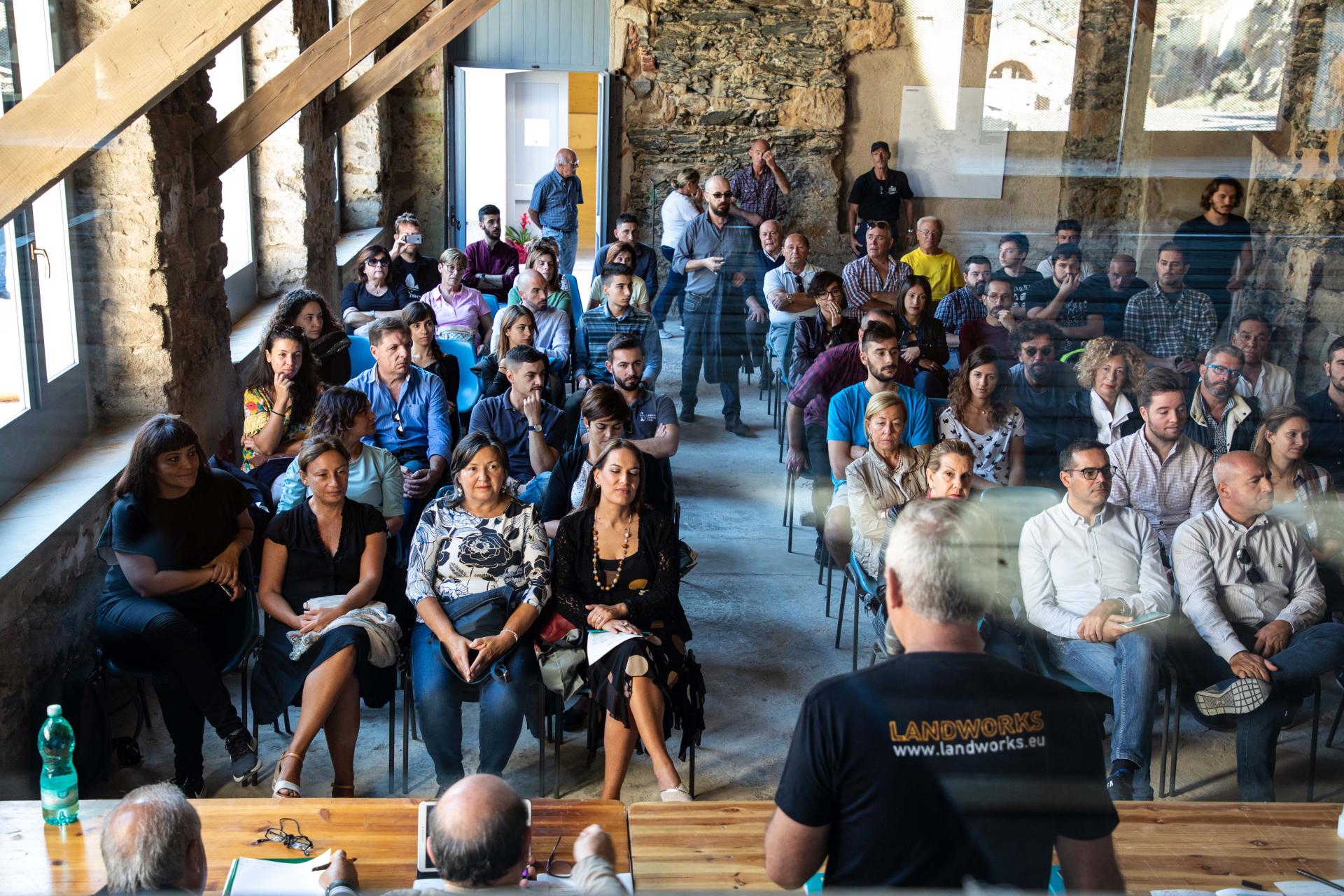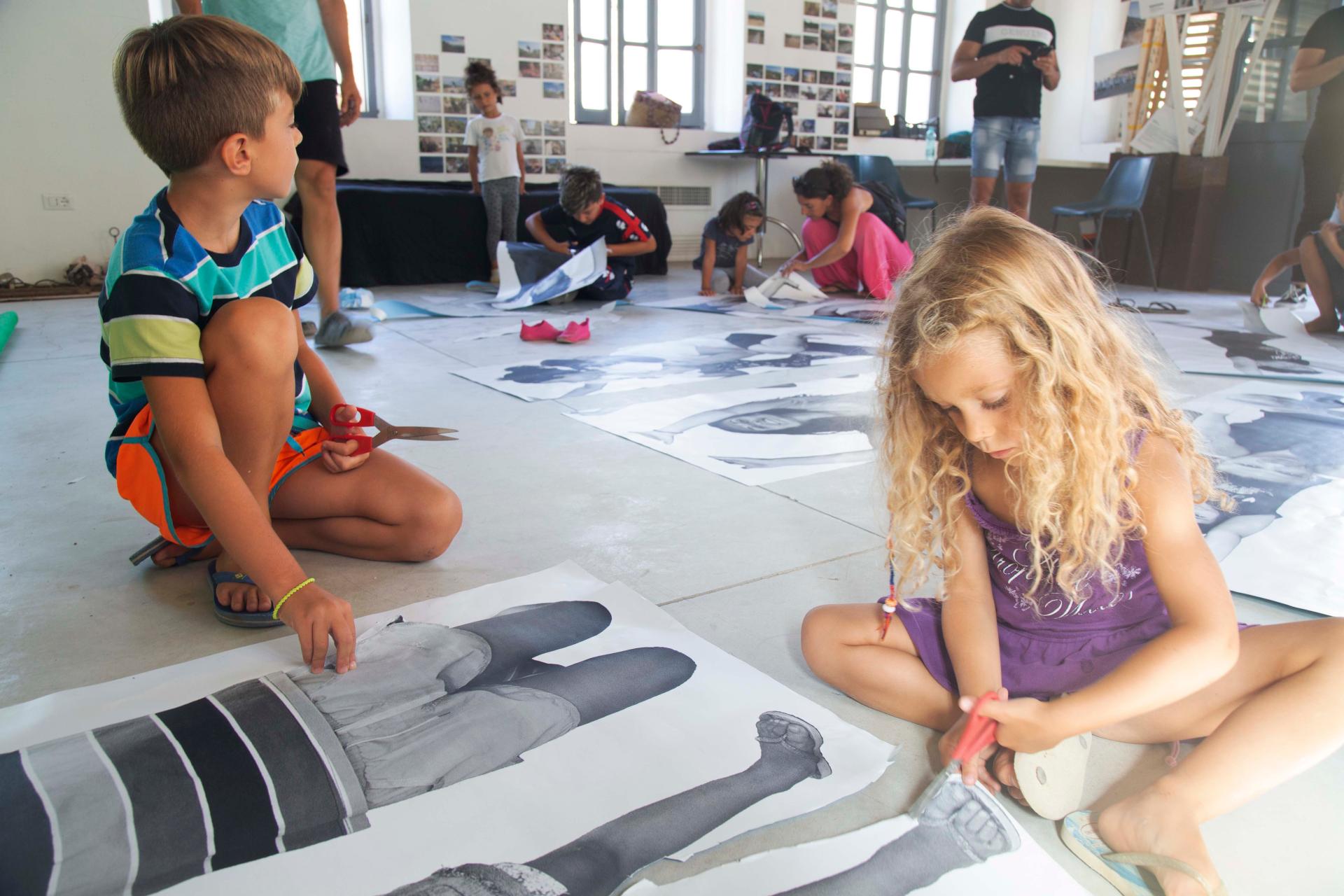MAR - Miniera ARgentiera
Basic information
Project Title
MAR - Miniera ARgentiera
Category
Regaining a sense of belonging
Project Description
MAR-Miniera ARgentiera is a territorial regeneration project aimed at enhancing and revitalizing the former mining village of Argentiera in Sardinia, Italy. It develops projects in social and cultural innovation, as well as multidisciplinary artistic and creative experimentation. It preserves the vocation, identity, and memory of the mining site as a place of work, innovation, and production. In the same location were mining activities once took place, culture is now created and produced.
Geographical Scope
National
Project Region
Italy
Urban or rural issues
It addresses urban-rural linkages
Physical or other transformations
It refers to other types of transformations (soft investment)
EU Programme or fund
No
Description of the project
Summary
MAR - Miniera ARgentiera is an innovative participatory project for cultural-based territorial regeneration, aiming to enhance and revitalize the ancient mining complex of Argentiera in Sardinia, Italy. This site is one of the major examples of island industrial archaeology, characterized by geographical, cultural, and social marginality. Following the mine's closure in 1963, it has been strongly affected by economic crises and depopulation, currently housing 54 residents (compared to its peak of 1400 during active mining), with many facilities and most houses abandoned and unused.
The MAR project was initiated in 2018, conceived and directed by the cultural association LandWorks in collaboration with numerous local and international entities and institutions. Over the years, it has evolved into a hybrid cultural center, a hub for experimentation, cultural production, and dissemination in service to the community and the territory. It is the only project in Italy to win the III, IV, and V editions of the national "Creative Living Lab" award, promoted by the General Direction for Contemporary Creativity of the Ministry of Culture. This award aims to promote regeneration processes in peripheral territories through the implementation of innovative and high-quality micro-projects in the cultural and creative fields. These projects are oriented towards the transformation and reuse of interstitial spaces, abandoned or disused buildings, and uncared-for green areas. MAR-Miniera Argentiera aims to enhance both the material and immaterial heritage by reclaiming deteriorating and abandoned spaces, transforming them into open and inclusive places. These spaces are meant to be freely and openly accessible 365 days a year, day and night, serving as centers for knowledge dissemination closely linked to the local community and the territory. The project fosters inclusion, particularly of young people, the elderly, and vulnerable individuals with disabilities.
The MAR project was initiated in 2018, conceived and directed by the cultural association LandWorks in collaboration with numerous local and international entities and institutions. Over the years, it has evolved into a hybrid cultural center, a hub for experimentation, cultural production, and dissemination in service to the community and the territory. It is the only project in Italy to win the III, IV, and V editions of the national "Creative Living Lab" award, promoted by the General Direction for Contemporary Creativity of the Ministry of Culture. This award aims to promote regeneration processes in peripheral territories through the implementation of innovative and high-quality micro-projects in the cultural and creative fields. These projects are oriented towards the transformation and reuse of interstitial spaces, abandoned or disused buildings, and uncared-for green areas. MAR-Miniera Argentiera aims to enhance both the material and immaterial heritage by reclaiming deteriorating and abandoned spaces, transforming them into open and inclusive places. These spaces are meant to be freely and openly accessible 365 days a year, day and night, serving as centers for knowledge dissemination closely linked to the local community and the territory. The project fosters inclusion, particularly of young people, the elderly, and vulnerable individuals with disabilities.
Key objectives for sustainability
The regeneration interventions primarily focus on the most significant open spaces in the village, which are unused or abandoned, primarily using natural or discarded materials available on-site (such as wood or stone), sometimes enriched with pictorial elements and forms. Conceived as a single gesture that combines functionality and spatiality, the interventions harmonize the places, transforming passageways and deteriorating areas into vibrant spaces that redefine the identity of the locations.
The project aims to regenerate abandoned spaces, acting with sensitivity to the territory. This involves alternating actions of environmental recovery and requalification with activities related to environmental education, training, and scientific research, promoting awareness of efficient material use and reuse.
Many interventions seek to enhance existing nature trails, guiding visitors toward responsible practices for nature and the environment. This includes introducing new modes of use, enriching the open-air museum with physical and digital artworks, creating a permanent and fluid exhibition continually in development.
The project aims to regenerate abandoned spaces, acting with sensitivity to the territory. This involves alternating actions of environmental recovery and requalification with activities related to environmental education, training, and scientific research, promoting awareness of efficient material use and reuse.
Many interventions seek to enhance existing nature trails, guiding visitors toward responsible practices for nature and the environment. This includes introducing new modes of use, enriching the open-air museum with physical and digital artworks, creating a permanent and fluid exhibition continually in development.
Key objectives for aesthetics and quality
Born from the desire to work with heritage, MAR aims to take care of the unused spaces of the village, reclaiming the legacies of decommissioning and abandonment as opportunities, notes on which new stories and a new identity can be written. The main objective is to return these spaces to the community and visitors, transforming them in a participatory way into flexible, accessible, and open places for everyone, 365 days a year, capable of growing and changing continually by hosting cultural and recreational events.
Every year, artistic residencies and participatory construction workshops are activated for the regeneration of spaces, enriched with new permanent, physical, and digital installations, animated by exhibitions and conferences, theatrical and dance performances, film festivals, and concerts, in close synergy with a rich network of partners.
Each year, MAR's projects and activities aim to create new significant "pieces" to reactivate key spaces in the village, in physical and social continuity with those previously realized, transforming abandoned sites into public spaces that are flexible and accessible, hosting events throughout the year, triggering a virtuous process of change and new cultural development. Among the latest achievements:
The cultural space "SCALA" - An abandoned residual area of over 500 square meters has become an accessible and inclusive public space dedicated to culture and learning. It is flexible and multifunctional, hosting various initiatives such as cinema events, theater, music, dance, and more.
The play space "FRONTE MARE" - Previously used as an unregulated parking area, a degraded transition area of over 500 square meters has been revitalized and returned to the community as a space for play, socializing, and cultural and sports events. It is a true square overlooking the horizon and the sea, equipped for basketball, volleyball, pickleball, and more.
Every year, artistic residencies and participatory construction workshops are activated for the regeneration of spaces, enriched with new permanent, physical, and digital installations, animated by exhibitions and conferences, theatrical and dance performances, film festivals, and concerts, in close synergy with a rich network of partners.
Each year, MAR's projects and activities aim to create new significant "pieces" to reactivate key spaces in the village, in physical and social continuity with those previously realized, transforming abandoned sites into public spaces that are flexible and accessible, hosting events throughout the year, triggering a virtuous process of change and new cultural development. Among the latest achievements:
The cultural space "SCALA" - An abandoned residual area of over 500 square meters has become an accessible and inclusive public space dedicated to culture and learning. It is flexible and multifunctional, hosting various initiatives such as cinema events, theater, music, dance, and more.
The play space "FRONTE MARE" - Previously used as an unregulated parking area, a degraded transition area of over 500 square meters has been revitalized and returned to the community as a space for play, socializing, and cultural and sports events. It is a true square overlooking the horizon and the sea, equipped for basketball, volleyball, pickleball, and more.
Key objectives for inclusion
In the belief that culture represents a fundamental element for the growth and development of territories, MAR teaches, starting from the youth, a new sense of belonging to the population, encouraging them to reclaim, respect, and reevaluate the territory through interaction and participation in co-design processes. It enriches closed and open spaces with new content and identity, rehabilitates places and communities by providing innovative interpretations and reuse of the territory.
Regeneration interventions are carried out through processes of participatory production, involving artists and professionals, residents, and guests. Participants in the activities, both young and old, become co-authors, co-producers, and direct protagonists of the works and content accessible to the public. Social inclusion is the key to ensuring the participation of residents and visitors not only as recipients but as actors in interventions that will benefit from systemic economic impacts on the territory.
Increasing the level of accessibility and usability of the site is the true engine of the regeneration of the former mining village, designing a fluid, safe, and accessible space for everyone throughout the entire day.
Regeneration interventions are carried out through processes of participatory production, involving artists and professionals, residents, and guests. Participants in the activities, both young and old, become co-authors, co-producers, and direct protagonists of the works and content accessible to the public. Social inclusion is the key to ensuring the participation of residents and visitors not only as recipients but as actors in interventions that will benefit from systemic economic impacts on the territory.
Increasing the level of accessibility and usability of the site is the true engine of the regeneration of the former mining village, designing a fluid, safe, and accessible space for everyone throughout the entire day.
Results in relation to category
Since its inception, MAR has evolved into an effective cultural production laboratory. In collaboration with various partners, it enriches the cultural offering across a spectrum of multidisciplinarity and experimentation, intensifying activities during the winter months to promote tourist destagionalization, overcome physical and social isolation, and create a tangible positive impact on the territory.
Feasibility is ensured by LandWorks, which has decided to establish a presence in the area, choosing Argentiera as its operational base for experimentation. Over the years, LandWorks has built a relationship of trust with residents, institutions, and stakeholders from the cultural and business worlds, fostering social cohesion and becoming a credible and recognized reference at both local and international levels. The participatory and shared actions arise from listening to the territory where LandWorks has been integrated for years, serving as a community manager and bridging the gap between the peripheral community and public entities, with whom it has collaborated from the beginning and who have become partners. In particular, LandWorks has established a close and synergistic collaboration with the Municipality of Sassari, entrusting the association with the management of its spaces and lodgings, as well as personnel, and the design and implementation of exhibitions, setups, and regeneration initiatives.
The high degree of experimentation in cultural activities, combining heritage and innovation, has led to significant success and media coverage with a strong impact on the territory, attracting attention from major national media outlets (Abitare, Artribune, Bell’Italia, Corriere della Sera, Domus, Rai - Linea Verde – Linea Blu, Repubblica, Sole24ore, Sky Arte…).
Here is the link to the press folder and press kit: https://drive.google.com/drive/folders/1K0lgKiXa8qwLgRxAElIHkp3631wvFRve?usp=sharing
Feasibility is ensured by LandWorks, which has decided to establish a presence in the area, choosing Argentiera as its operational base for experimentation. Over the years, LandWorks has built a relationship of trust with residents, institutions, and stakeholders from the cultural and business worlds, fostering social cohesion and becoming a credible and recognized reference at both local and international levels. The participatory and shared actions arise from listening to the territory where LandWorks has been integrated for years, serving as a community manager and bridging the gap between the peripheral community and public entities, with whom it has collaborated from the beginning and who have become partners. In particular, LandWorks has established a close and synergistic collaboration with the Municipality of Sassari, entrusting the association with the management of its spaces and lodgings, as well as personnel, and the design and implementation of exhibitions, setups, and regeneration initiatives.
The high degree of experimentation in cultural activities, combining heritage and innovation, has led to significant success and media coverage with a strong impact on the territory, attracting attention from major national media outlets (Abitare, Artribune, Bell’Italia, Corriere della Sera, Domus, Rai - Linea Verde – Linea Blu, Repubblica, Sole24ore, Sky Arte…).
Here is the link to the press folder and press kit: https://drive.google.com/drive/folders/1K0lgKiXa8qwLgRxAElIHkp3631wvFRve?usp=sharing
How Citizens benefit
Through the strong relationship with local and foreign schools and universities, and the implementation of "bottom-up" projects and initiatives that focus on the local community by involving it in self-organization projects, the planning of co-design and participatory construction workshops has been consolidated. The aim is to redesign, shape, and connect spaces and their functions through the action and active participation of residents, local institutions, and the involvement of multidisciplinary groups of professionals, researchers, and students from around the world, in continuity with LandWorks' multi-year international experience.
The concept of the projects arises from the interaction among workshop participants, realized through the involvement and active participation of the community and numerous volunteers, including local university students and young local and international professionals. They alternate during all phases in an atmosphere of sharing and discussion with artists and creatives, united by the desire to act on the territory to build spaces with strong social value.
As an example, the "memorie" project is highlighted, representing the first core of the permanent installation that brings to light the life of the village and its inhabitants inside and outside the mine. A journey reconstructed thanks to the contribution of experts and the participation of the local community that has decided to share the memories of private memory to make it collective.
The concept of the projects arises from the interaction among workshop participants, realized through the involvement and active participation of the community and numerous volunteers, including local university students and young local and international professionals. They alternate during all phases in an atmosphere of sharing and discussion with artists and creatives, united by the desire to act on the territory to build spaces with strong social value.
As an example, the "memorie" project is highlighted, representing the first core of the permanent installation that brings to light the life of the village and its inhabitants inside and outside the mine. A journey reconstructed thanks to the contribution of experts and the participation of the local community that has decided to share the memories of private memory to make it collective.
Physical or other transformations
It refers to other types of transformations (soft investment)
Innovative character
The goal is to rehabilitate these spaces, turning them into places for the dissemination of knowledge closely tied to heritage, accessible and open to everyone 365 days a year. Visitors can explore the material and immaterial heritage at any time, in complete safety and autonomy, freely and at no cost, experiencing an engaging and emotional, unique, and memorable encounter with the space and the artworks.
MAR aims to promote new forms of enjoyment and experiment with innovative ways of narrating historical and identity-related memory. It enriches the open-air, liquid, and inclusive museum with new artworks and installations—a place for knowledge dissemination closely linked to the local community and heritage. The focus is not only on the local audience but also on an international and multidisciplinary one, fostering inclusion, especially for young people, the elderly, and individuals with disabilities, in an atmosphere of cultural and social integration.
The objective is to enhance the historical and identity-related memory of the site, creating an encounter between tradition and innovation. It develops an engaging and emotional journey that transforms both enclosed and open spaces into places not only dedicated to culture and learning but also to relationships, sharing, socializing, and dialogue.
MAR has created the first open-air museum in augmented reality with the permanent installation "ARgentiera in Augmented Reality." Here, visitors can freely explore the material and immaterial heritage, engaging in a distinctive and highly memorable experience. The installation transforms static exhibitions into imaginative panoramas, with the places themselves narrating and highly evocative.
Visiting the artworks is simple. Just download the free app onto your smartphone, frame the artwork with the device, and be surprised and transported into another dimension through a unique digital narrative.
MAR aims to promote new forms of enjoyment and experiment with innovative ways of narrating historical and identity-related memory. It enriches the open-air, liquid, and inclusive museum with new artworks and installations—a place for knowledge dissemination closely linked to the local community and heritage. The focus is not only on the local audience but also on an international and multidisciplinary one, fostering inclusion, especially for young people, the elderly, and individuals with disabilities, in an atmosphere of cultural and social integration.
The objective is to enhance the historical and identity-related memory of the site, creating an encounter between tradition and innovation. It develops an engaging and emotional journey that transforms both enclosed and open spaces into places not only dedicated to culture and learning but also to relationships, sharing, socializing, and dialogue.
MAR has created the first open-air museum in augmented reality with the permanent installation "ARgentiera in Augmented Reality." Here, visitors can freely explore the material and immaterial heritage, engaging in a distinctive and highly memorable experience. The installation transforms static exhibitions into imaginative panoramas, with the places themselves narrating and highly evocative.
Visiting the artworks is simple. Just download the free app onto your smartphone, frame the artwork with the device, and be surprised and transported into another dimension through a unique digital narrative.
Disciplines/knowledge reflected
Thanks to a strong relationship with institutions, associations, and businesses, MAR has established pathways of co-design and co-production, attracting diverse audiences globally and making the territory a permanent field of experimentation and education.
Through the coordinated efforts of the involved partners, MAR promotes new forms of creation at the intersection of various cultural and creative sectors, embracing a wide range of creative and performative disciplines, from architecture to landscape, design to art, dance to music, cinema to theater. The regenerated spaces are "animated" by cultural and recreational events, supported by numerous partners, as well as public artworks, physical and digital installations, soundscapes, audiovisuals, and augmented reality.
By working in collaboration with various entities in cultural, educational, and economic realities, with the belief that creating a system and integrating resources and expertise is the right path to bring high-quality events to life, MAR has created a liquid museum in continuous development. It engages both enclosed and open spaces, transforming them into places not only dedicated to culture and learning but also into spaces for connection and sharing, socializing, and dialogue.
The artworks, integrated and enriched in the open-air museum each year, are created by artists and creatives, professionals, and experts with diverse backgrounds and skills. They participate in artistic residencies, workshops, and labs at Argentiera, supported by partners in a multicultural and participatory production process in synergy with the community, associations, and local entities.
Through the coordinated efforts of the involved partners, MAR promotes new forms of creation at the intersection of various cultural and creative sectors, embracing a wide range of creative and performative disciplines, from architecture to landscape, design to art, dance to music, cinema to theater. The regenerated spaces are "animated" by cultural and recreational events, supported by numerous partners, as well as public artworks, physical and digital installations, soundscapes, audiovisuals, and augmented reality.
By working in collaboration with various entities in cultural, educational, and economic realities, with the belief that creating a system and integrating resources and expertise is the right path to bring high-quality events to life, MAR has created a liquid museum in continuous development. It engages both enclosed and open spaces, transforming them into places not only dedicated to culture and learning but also into spaces for connection and sharing, socializing, and dialogue.
The artworks, integrated and enriched in the open-air museum each year, are created by artists and creatives, professionals, and experts with diverse backgrounds and skills. They participate in artistic residencies, workshops, and labs at Argentiera, supported by partners in a multicultural and participatory production process in synergy with the community, associations, and local entities.
Methodology used
MAR aims to become and create a virtuous model of urban regeneration, a permanent and inclusive cultural initiative, serving as a reference and fostering community relationships. The goal is to convey the benefits and impacts resulting from participation in designing the concept and implementing the operational plan to various stakeholders, enabling replication in other contexts and scaling across the territory. The territory is always perceived as a collective asset to be valued and protected.
MAR seeks to make a positive impact on society and generate sustainable social value by proposing a new format for workshops and operational labs. Anyone interested in participating in a learning experience and contributing to the construction of a public space can take part in one or more phases of the workshops. Participants work intensively under the guidance of professionals, alongside the community and local actors. Activities are open to all those who want to make a tangible contribution to the recovery and regeneration of the village—students and professionals, young and old, architects and designers, creatives, and artisans—actively participating in the constructive practice of a public space architecture project. This includes the design and implementation of micro-interventions and installations, alternating theoretical lessons with practical fieldwork in a collaborative and engaging atmosphere with artists and the community.
MAR aims to maintain a constant focus on the ancient village, decoupling the schedule of initiatives, traditionally concentrated in the summer. It enhances and diversifies the cultural offerings and services, true regenerative attractions for the territory, by intensifying events even outside the typical season. This strategy promotes the region, overcomes physical and cultural isolation, enhances its identity, and preserves the context and the resident community.
MAR seeks to make a positive impact on society and generate sustainable social value by proposing a new format for workshops and operational labs. Anyone interested in participating in a learning experience and contributing to the construction of a public space can take part in one or more phases of the workshops. Participants work intensively under the guidance of professionals, alongside the community and local actors. Activities are open to all those who want to make a tangible contribution to the recovery and regeneration of the village—students and professionals, young and old, architects and designers, creatives, and artisans—actively participating in the constructive practice of a public space architecture project. This includes the design and implementation of micro-interventions and installations, alternating theoretical lessons with practical fieldwork in a collaborative and engaging atmosphere with artists and the community.
MAR aims to maintain a constant focus on the ancient village, decoupling the schedule of initiatives, traditionally concentrated in the summer. It enhances and diversifies the cultural offerings and services, true regenerative attractions for the territory, by intensifying events even outside the typical season. This strategy promotes the region, overcomes physical and cultural isolation, enhances its identity, and preserves the context and the resident community.
How stakeholders are engaged
MAR leverages a network of relationships with some of the most interesting and innovative entities in the sector, working to enhance compromised sites by bridging the gap between different actors, both public and private. It collaborates with various entities, operators in cultural, educational, and economic realms, believing that creating a system and integrating resources and expertise is the right path to give life to quality events capable of generating a real positive impact on the territories it operates in.In 2018, MAR signed a formal Memorandum, called "MAR-Miniera ARgentiera," for the regeneration and revitalization of the village. The stakeholders include LandWorks (as the lead partner), the Municipality of Sassari, the Geomineralogical, Historical and Environmental Park of Sardinia, the Sardegna Film Commission Foundation, the DADU - Department of Architecture, Design, and Urban Planning - University of Sassari, the Academy of Fine Arts "Mario Sironi" in Sassari, the Higher Education Institute "G. M. Devilla" in Sassari, the Comprehensive Institute "Latte Dolce Agro" in Sassari, the Theater of Sardegna s.c.a.r.l., the Erasmus Association - ESN Sassari, with the participation of numerous other local and international entities and institutions. LandWorks directs and coordinates all the regeneration programming and interventions. With the support of the University, schools, and associations, it initiates workshops, participatory construction labs, artistic residencies, and cultural and recreational events in the regenerated outdoor public spaces, which the Municipality of Sassari provides free of charge, along with its relevant venues. The Sardegna Film Commission Foundation, Sardegna Teatro, and the Academy will contribute to the production of innovative works and performances, and the dissemination of quality interdisciplinary interventions that will enliven the recovered spaces, bringing the contemporary in its various artistic expression.
Global challenges
MAR operates in the former mining village, heavily affected by depopulation, economic crisis, and high rates of school dropout. In these areas characterized by geographical, cultural, and social marginality, as well as limited accessibility, there is often a strong lack of interest among residents and visitors in the richness and peculiarities of the area. This translates into a low awareness of what the territory offers.
In the belief that culture is a fundamental element for civil growth and a necessary support for the socio-economic development of regions, MAR increasingly engages diverse audiences, especially the youth, in the knowledge and enhancement of the historical and cultural heritage of the area.
In the belief that culture is a fundamental element for civil growth and a necessary support for the socio-economic development of regions, MAR increasingly engages diverse audiences, especially the youth, in the knowledge and enhancement of the historical and cultural heritage of the area.
Learning transferred to other parties
MAR is a permanent and reference cultural laboratory, replicable in different contexts, for cultural promotion and interactive tourism with strong territorial appeal. It is open to the region and accessible throughout the year, particularly for vulnerable categories and individuals with disabilities, even in low seasons, combining knowledge, culture, and entertainment.
Among the examples of replicable projects, one is undoubtedly "ARgentiera in Augmented Reality," a permanent open-air installation rich in physical and augmented reality artworks. It aims to enhance the historical and identity memory of the former mining village of Argentiera in Sardinia through a unique and fascinating artistic journey. This journey is capable of engaging and thrilling, blending tradition with the artistic exploration offered by technological innovations, fostering a generational encounter between the elderly residents with their cultural background and the younger population.
With the simple assistance of a free app provided by the project, visitors can discover the material and immaterial heritage, freely exploring the buildings and old ruins, symbolic and representative places of the village. These spaces will be populated with new physical and digital installations, memories of the mine from both yesterday and today.
Among the examples of replicable projects, one is undoubtedly "ARgentiera in Augmented Reality," a permanent open-air installation rich in physical and augmented reality artworks. It aims to enhance the historical and identity memory of the former mining village of Argentiera in Sardinia through a unique and fascinating artistic journey. This journey is capable of engaging and thrilling, blending tradition with the artistic exploration offered by technological innovations, fostering a generational encounter between the elderly residents with their cultural background and the younger population.
With the simple assistance of a free app provided by the project, visitors can discover the material and immaterial heritage, freely exploring the buildings and old ruins, symbolic and representative places of the village. These spaces will be populated with new physical and digital installations, memories of the mine from both yesterday and today.
Keywords
Territorial Regeneration
Co-design and Participatory Construction
Participation and Inclusion
Interdisciplinarity
Center for Experimentation and Cultural Production

